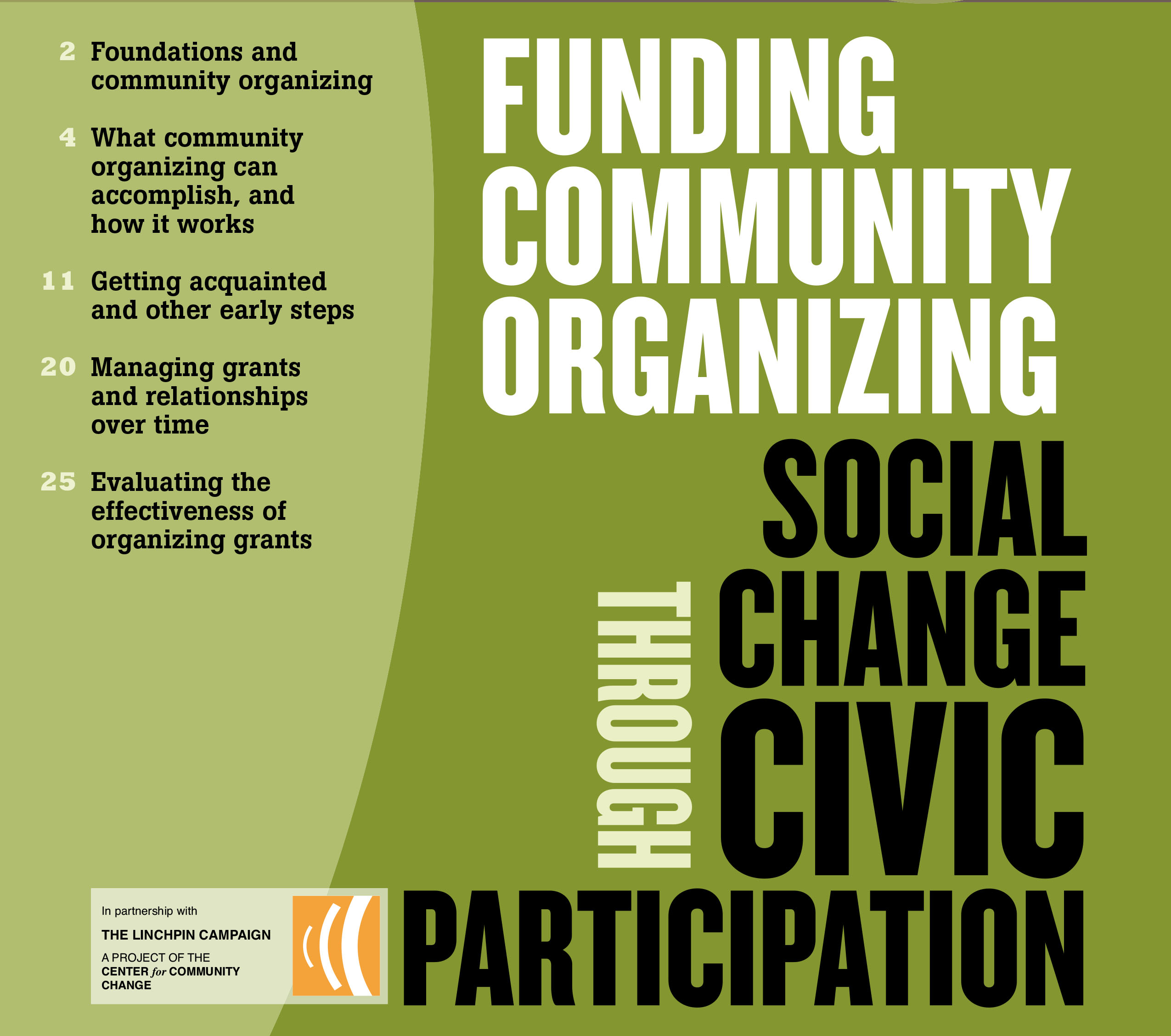Supporting a Community Research Project An Example of Coalition Building
Hoping to expand their reach, a small coalition of organizing groups and foundations decided to invite additional funders from their mid-size city to join their ranks. Several grantmakers expressed interest, and the group soon grew to include family foundations, community foundations, private foundations, a donor-advised fund, a health conversion foundation, and the city office of economic development. Some were already funding organizing, some had been dabbling, and some had no experience. As a program officer explained, the group adopted a simple ground rule: membership was open to anyone who was interested, but "by the end of the year, everybody’s got to make an investment, or they’ve got to leave. You’ve got a year to learn, to sit together, to figure this out, to see what you can do."
The organizing groups proposed a resource mapping exercise, which would enable them to pull together information on issues such as immigration, economic development, and education. A grantmaker at a large and historically rather cautious foundation saw an opportunity. The board of directors had only recently adopted advocacy grantmaking to advance its goals, and she felt they weren’t quite ready to support community organizing. Recognizing that the initiative involved “resource mapping,” she saw an opening to recommend a discretionary grant of $20,000 toward a total budget of $55,000. Hearing her plan, a grantmaker at another foundation said, “You know, that’s a really good idea. I could use this as an opportunity to educate my foundation.”
The resource mapping project was funded, and a local “atlas” was produced. It was “a pretty incredible piece of work,” according to the grantmaker, including maps that showed immigrant enclaves, regional sprawl, low-income neighborhoods, underperforming schools, and tax subsidies to local businesses. Taken together, the information demonstrated that poor and minority areas were being short-changed in a number of ways. The organizing groups used the information to help residents see the patterns and begin to work together. The city’s response included a new approach to negotiating community benefit agreements with developers.
The program officer who had worried about her foundation’s willingness to support organizing brought the atlas to a board retreat and “made an argument for why organizing should become part of our larger advocacy agenda. The board unanimously adopted it.”



